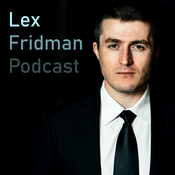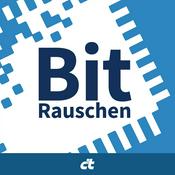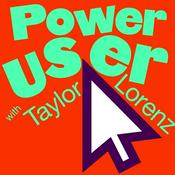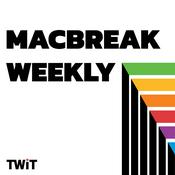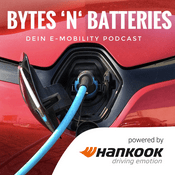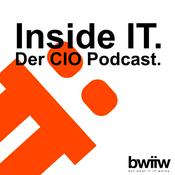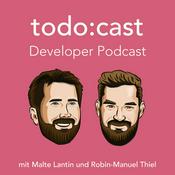21 Episoden

#019: END-OF-YEAR CELEBRATION: Moments You Loved, Stories You Missed, and 2026 Predictions You Need
11.12.2025 | 55 Min.
SummaryIn today’s Coredump Session, François and Chris wrap up the year with a special milestone celebration for the 20th episode of the series. They take listeners behind the mic to reflect on how Coredump began, the moments that defined 2025, and the lessons learned along the way. Expect highlights from the year’s most talked-about discussions, bold predictions for what’s ahead in 2026, and the biggest live Q&A yet—where nothing is off the table.Key Takeaways:Why Coredump Sessions started and how the show has evolved over 20 episodesThe biggest engineering lessons guests shared throughout 2025The most surprising device failures and field behaviors teams faced this yearHow firmware teams adapted to fast-changing toolchains and new requirementsThe rise of AI-assisted debugging, testing, and development in embedded workHow security mandates tightened and reshaped device developmentThe recurring theme that real-world conditions rarely match lab assumptionsWhat François and Chris learned from producing the series behind the scenesWhat the hosts expect to define embedded systems development in 2026The expanded live Q&A format and how the community is shaping future episodesChapters:00:00 Teasers01:30 Intro/ Welcome03:35 The Genesis of Core Dump06:54 Favorite Moments and Lessons Learned08:45 Clip Reaction: Nick Sinas's OTA Nightmare in the Snow12:19 Clip Reaction: Lack of Security at Pebble16:45 Clip Reaction: Dan Mangum on AI & Engineering21:50 Clip Reaction: Vatsal at Ultrahuman Talks Always-On Devices25:29 Clip Reaction: Chad from Gabb Talks Security30:12 Looking Ahead: Predictions for 202635:59 The Rise of AI and Edge Computing42:24 Evolving Skills for Firmware Engineers47:01 Security in Embedded Systems49:01 The Future of Testing in Embedded Development53:15 Conclusions & Thank YousJoin the Interrupt Slack Watch this episode on YouTube Follow MemfaultLinkedInBlueskyTwitterOther ways to listen:Apple PodcastsiHeartRadioAmazon MusicGoodPodsCastboxVisit our website

#019: END-OF-YEAR CELEBRATION: Moments You Loved, Stories You Missed, and 2026 Predictions You Need
10.12.2025 | 55 Min.
SummaryIn today’s Coredump Session, François and Chris wrap up the year with a special milestone celebration for the 20th episode of the series. They take listeners behind the mic to reflect on how Coredump began, the moments that defined 2025, and the lessons learned along the way. Expect highlights from the year’s most talked-about discussions, bold predictions for what’s ahead in 2026, and the biggest live Q&A yet—where nothing is off the table.Key Takeaways:Why Coredump Sessions started and how the show has evolved over 20 episodesThe biggest engineering lessons guests shared throughout 2025The most surprising device failures and field behaviors teams faced this yearHow firmware teams adapted to fast-changing toolchains and new requirementsThe rise of AI-assisted debugging, testing, and development in embedded workHow security mandates tightened and reshaped device developmentThe recurring theme that real-world conditions rarely match lab assumptionsWhat François and Chris learned from producing the series behind the scenesWhat the hosts expect to define embedded systems development in 2026The expanded live Q&A format and how the community is shaping future episodesChapters:00:00 Teasers01:30 Intro/ Welcome03:35 The Genesis of Core Dump06:54 Favorite Moments and Lessons Learned08:45 Clip Reaction: Nick Sinas's OTA Nightmare in the Snow12:19 Clip Reaction: Lack of Security at Pebble16:45 Clip Reaction: Dan Mangum on AI & Engineering21:50 Clip Reaction: Vatsal at Ultrahuman Talks Always-On Devices25:29 Clip Reaction: Chad from Gabb Talks Security30:12 Looking Ahead: Predictions for 202635:59 The Rise of AI and Edge Computing42:24 Evolving Skills for Firmware Engineers47:01 Security in Embedded Systems49:01 The Future of Testing in Embedded Development53:15 Conclusions & Thank YousJoin the Interrupt Slack Watch this episode on YouTube Follow MemfaultLinkedInBlueskyTwitterOther ways to listen:Apple PodcastsiHeartRadioAmazon MusicGoodPodsCastboxVisit our website

The Hidden Complexity of Sleep Tech: Power, Comfort, and 8 Hours of Reliability
26.11.2025 | 58 Min.
In today’s Coredump Session, François and Chris from Memfault sit down with Charles Taylor, co-founder of Ozlo Sleep, to explore the journey from Bose’s original Sleepbuds to the rebirth of a product designed to help people truly rest. The conversation traces how Ozlo revived this beloved idea, balancing power management, all-night comfort, and reliability in one of the most demanding consumer tech categories. Along the way, Charles shares lessons from bringing a hardware product back to life, testing technology people use in their sleep, and building a community that believes better rest starts with better engineering.Key Takeaways:Charlie's journey from engineering to entrepreneurship was accidental but rewarding.The emotional connection users have with physical products is significant.Sleep tech addresses the problem of noise disruption during sleep.Kickstarter was used not just for funding but to build a community.Firmware updates are crucial for improving user experience and product functionality.Designing sleep earbuds involves unique challenges related to comfort and size.Battery life and efficiency are critical in hardware development.Sensing technology in sleep tech can provide valuable health data.Testing and quality assurance are essential in product development.Navigating FDA regulations is complex but necessary for medical-related devices.Chapters:00:00 Intro and Teasers02:02 Meet Charlie Taylor and the Ozlo Sleep Story06:13 Why Sleepbuds Exist and Why Noise Matters07:07 Rebuilding Bose’s Discontinued Sleepbuds09:15 The Hardest Parts of Hardware: Timelines and Vendors10:39 Kickstarter as Validation and Community Building15:57 Designing for Sleep: Comfort, Power, and Miniaturization23:16 The Ear as the USB to the Body: Sensing and Health Insights26:18 Testing Sleep Tech in the Real World33:34 Firmware as the Real Product and Ozlo’s Update Strategy45:38 Moving Toward Medical: FDA and Software Therapies55:17 Customer Feedback at Scale and Prioritizing What MattersJoin the Interrupt Slack Watch this episode on YouTube [ADD Playlist YT Link from here)Follow MemfaultLinkedInBlueskyTwitterOther ways to listen:Apple PodcastsiHeartRadioAmazon MusicGoodPodsCastboxVisit our website

#017: Building and Scaling a Startup in the Ultra-Competitive Health Wearables Market
29.10.2025 | 57 Min.
In today's Coredump Session, François Baldassari and Chris Coleman sit down with Ultrahuman co-founder Vatsal Singhal to unpack what it takes to build and scale a hardware startup in the fiercely competitive health wearable market. From transitioning from software to hardware to building responsibly with AI and machine learning, Vatsal shares what it means to blend deep engineering rigor with a mission to improve human performance. This conversation explores the challenges, surprises, and future of health-tech innovation at the edge.Key TakeawaysHow Ultrahuman transitioned from a software-first mindset to mastering complex hardware development.Lessons learned moving from large-scale software systems to building precision-focused health wearables.Why building hardware for health requires a fundamentally different level of accountability and rigor.The role of machine learning at the edge and how it enables better, faster insights while managing battery and compute tradeoffs.How responsible use of AI in health applications shapes product design and user trust.The importance of rapid iteration cycles and adopting software methodologies in hardware innovation.Insights into how Ultrahuman’s internal teams use AI not just in engineering, but across all business functions.A look at what’s next for health-tech — and where innovation is heading in wearables and bio-sensing.Chapters:00:00 Intro & Teasers03:43 From Software to Hardware: The Leap of Faith07:49 The Harsh Realities of Hardware10:40 Iterating Fast Without Breaking People15:17 Redefining A/B Testing in Hardware21:40 Why Ultrahuman Built Its Own Factory26:56 Scaling Production Across Continents29:48 Managing Complexity: 20 Hardware Revisions in a Year35:08 Firmware Velocity & Observability with Memfault43:42 Health Tech Meets Regulation47:55 Shared Codebases & Fast Iteration Across Products50:39 Building the Machines That Build the Rings54:34 Responsible AI & The Future of Health Wearables56:35 Closing Reflections & Key TakeawaysJoin the Interrupt Slack Watch this episode on YouTube Follow MemfaultLinkedInBlueskyTwitterOther ways to listen:Apple PodcastsiHeartRadioAmazon MusicGoodPodsCastboxVisit our website

#016: From Startup to Global Brand: Scaling Engineering at reMarkable
17.9.2025 | 1 Std.
In today’s Coredump Session, we sit down with Nico Comier, CTO of reMarkable, to explore the journey from early-stage startup to global brand. Nico shares insights on scaling engineering teams, balancing technical credibility with leadership responsibilities, and what it really takes to bring a hardware product to market. From the pressures of product launches to the importance of customer connection, this conversation dives into the realities of building impactful technology.Key Takeaways:Nico Comier emphasizes the importance of customer impact in engineering roles.reMarkable's journey from startup to global brand involved scaling engineering teams.Cross-functional collaboration is key to successful product launches.Understanding customer needs is crucial for product development.reMarkable focuses on creating tools that help people think better.The Paper Pro Move was developed in response to user feedback.reMarkable values a hacker culture and allows device jailbreaking.Telemetry and customer feedback are vital for product improvement.reMarkable's leadership believes in maintaining technical credibility.Cross-functional teams enhance empathy and collaboration within organizations.Chapters:00:00 Introduction to reMarkable and Nico's Journey04:21 The Path to CTO: Insights and Experiences07:21 Technical Leadership and Staying Relevant10:03 Understanding Customer Needs in Tech Leadership13:00 The Launch of Paper Pro Move: A Major Achievement15:17 Preparing for Product Launch: Challenges and Strategies18:07 Balancing Agile and Waterfall in Product Development21:04 Product Decision-Making: Insights from the Paper Pro Move23:39 Navigating Challenges in Hardware Development26:30 Final Thoughts on Product Launch and Future Directions29:30 The Importance of Hypercare Post-Launch35:44 Scaling a Startup: Lessons Learned39:41 Building Cross-Functional Teams47:13 The Role of Firmware in Product Development50:48 Integrating Accessibility and Customer Feedback57:02 Leadership and Team Dynamics01:00:00 OutroJoin the Interrupt Slack Watch this episode on YouTube Follow MemfaultLinkedInBlueskyTwitterOther ways to listen:Apple PodcastsiHeartRadioAmazon MusicGoodPodsCastboxVisit our website
Weitere Technologie Podcasts
Trending Technologie Podcasts
Über Coredump Sessions
Höre Coredump Sessions, Flugforensik - Abstürze und ihre Geschichte und viele andere Podcasts aus aller Welt mit der radio.de-App
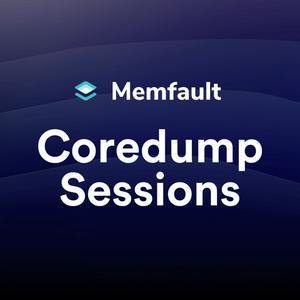
Hol dir die kostenlose radio.de App
- Sender und Podcasts favorisieren
- Streamen via Wifi oder Bluetooth
- Unterstützt Carplay & Android Auto
- viele weitere App Funktionen
Hol dir die kostenlose radio.de App
- Sender und Podcasts favorisieren
- Streamen via Wifi oder Bluetooth
- Unterstützt Carplay & Android Auto
- viele weitere App Funktionen


Coredump Sessions
App laden,
loshören.





